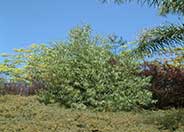
Common name:Australian Willow
Botanical name:Geijera parviflora
Australian Willow (Geijera parviflora) is an excellent specimen tree for medium-sized gardens. This Australian native tree reaches 45’ tall and 20’ wide and is very low-water-use and low maintenance. These trees can be found in nurseries in both single-trunk and multi-trunk forms. The natural growth habit is weeping and irregular, so it does require some selective pruning and shaping when young to achieve the desired look. Thinning out the heavy, weeping branches will take some of the weight out of them, and they usually lift. The tree may require this type of pruning a few times a year for the first two or three years, but once it has achieved a height requiring a ladder to prune, it should be shaped by a licensed arborist. This tree is a slow grower and would benefit from an application of nitrogen fertilizer every year. It should be planted at least four feet away from any hardscape areas, 15 feet from structures such as houses and buildings, and not near any powerlines. Shrubs and perennials should be planted about three feet away from this tree. It should be irrigated for about 45 minutes once a week when using most in-line drip irrigation systems.
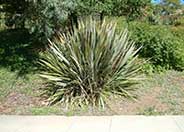
Common name:New Zealand Flax
Botanical name:Phormium tenax
New Zealand Flax is a large, bold plant with stiffly vertical, sword-like, green leaves that arise from its base. It should be grown under full sun for best color. Varieties will offer different growth habits and leaf color.
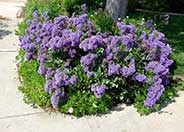
Common name:Sea Lavender, Statice
Botanical name:Limonium perezii
This mounding shrub will reach about 3' high and has large, dark green leaves with small blue and purple flowers that bloom in spring and summer.
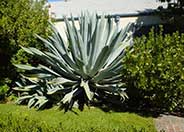
Common name:Century Plant, Maguey
Botanical name:Agave americana
This plant is fast growing to about 6'-10' tall and 8'-13' wide. Wide gray leaves have stiff terminal spines and recurved teeth on margins. It prefers full sun and well-drained situations. After blooming, which could take several years, it will die but will send up new pups from around the base. Some people are allergic to the sap. Removal is difficult if unwanted.
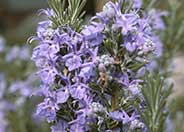
Common name:Tuscan Blue Upright Rosemary
Botanical name:Rosmarinus officinalis 'Tuscan Blue'
The Upright Rosemary is an upright shrub that grows 3'-6' tall. It has dark green leaves and bright, showy, lavender blue flowers throughout the year. This shrub is drought tolerant and attracts butterflies.
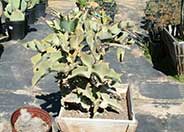
Common name:Felt Plant or Bush, Velvetleaf
Botanical name:Kalanchoe beharensis
This unusual succulent perennial will grow 4'-5' tall and wide. It has thick, fuzzy, gray green to golden leaves with inconspicuous flowers. Although tender to frost, it makes an excellent accent for rock gardens or desert themed landscapes.
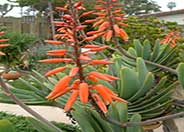
Common name:Fan Aloe
Botanical name:Aloe plicatilis
This wide succulent shrub grows 3'-6' tall and wide, with fan-like clusters of the bluish-gray round tipped leaves. From each fan emerges an open terminal cluster of tubular, orange red flowers in late winter to early spring. Plant in full sun if on the coast or in shade if inland. It is hardy to about 23 degrees F. It needs winter and spring irrigation if grown where does does not receive adequate water from rainfall.
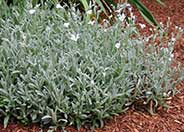
Common name:Snow-In-Summer
Botanical name:Cerastium tomentosum
Masses of snow white flowers highlight this plant during the early summer season.
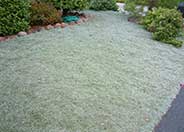
Common name:Dymondia, Rock Ditty
Botanical name:Dymondia margaretae
This foliage is gray/green/silvery; it is a very dense, mat forming ground cover. It tolerates drought, cold, salt spray and poor soils. It's deep rooted and produces small, inconspicuous yellow flowers. Rock Ditty is great for use in between stepping stones or pavers.
Designer: Suding Design
Photographer: GardenSoft
Physical weed control, including mulching, or hand removal protects the watershed from harmful chemicals.
Develop healthy soil for plants that are vigorous and naturally pest-resistant.